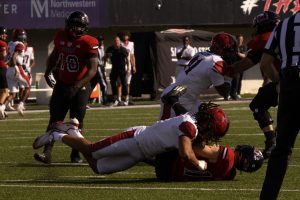Goals of Preamble tell original intent
September 16, 1987
On September 17, 1787, the single longest-lasting constitution in the world was signed by its authors. For 200 years the U.S. Constitution has served as a protector and guide of the American people and an example of democracy and justice to the world.
In its first 200 years, the Constitution has survived a myriad of conflicting theories about how it should be interpreted. Currently, a hotly debated theory is that the Supreme Court should look to the founders’ “original intent” in writing the Constitution the way they did.
An original intent question is framed something like this: “When the founding fathers wrote the First Amendment prohibition against government-established religion, did they really intend for public school children to be refused the right to pray to God during school hours?” In 1787, children not only were allowed to pray in school, but were often required to.
There isn’t enough room in an entire edition of this newspaper to thoroughly debate the validity of using the experience of the founders in the year 1787 as a guide to how people should live in 1987. But there is enough room on this page to at least put forth the proposition that one need look no farther than the Preamble to find the founders’ intent.
The founders wanted America to reach certain goals—”to form a more perfect Union, establish Justice, insure domestic Tranquility, provide for the common defense, promote the general Welfare and secure the Blessings of Liberty to ourselves and our Posterity.”
Unfortunately, some people think the process of achieving the founders’ aims is finite—that someday they’ll look around them and the U.S. will be “a more perfect union” where all the goals in the Preamble are met in every way for every American, with no potential for their loss to future generations.
Flexibility in interpreting the Constitution is important because the ability of the nation to meet the ambitions set forth in the Preamble changes over time. The Constitution should be interpreted in the way that best ensures that the goals of the Preamble can be met—no matter what conditions the nation is operating under at the time.
All the judges, political scientists and law professors in the country can debate original intent and its validity for years—and they will. But they can never find a way to express that intent better than the founders did 200 years ago.
Here’s to another 200 years.






